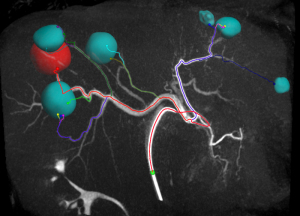by
Lauren Dubinsky, Senior Reporter | June 07, 2016

Advancements in image-guided
therapies are needed
Royal Philips and Yale School of Medicine announced yesterday a new research program that will explore new concepts in image-guided therapies, diagnostic imaging, and informatics for interventional oncology. The program is part of their existing Master Research Agreement.
Over the past few years there has been a lot of development in the image-guided therapy field for locally treating tumors. As a result, interventional oncology procedure volumes have grown tremendously.
But the challenge is that it's hard to predict the effectiveness of the procedure. The goal of the research program is to redefine and standardize the procedure in order to achieve more predictable and controlled outcomes.



Ad Statistics
Times Displayed: 365609
Times Visited: 7071 Quality remanufactured Certified Centrifuges at Great prices! Fully warranted and backed by a company you can trust! Call or click for a free quote today! www.Centrifugestore.com 800-457-7576
As part of the agreement, Jeff Geschwind, chair of radiology and biomedical imaging at Yale and the program's technology partner, and his team, will work with clinical scientists at Philips, and will carry out the research at a new state-of-the-art research facility.
One of the main focuses of the program is liver cancer, which is the second most deadly type of cancer. Only a small number of liver cancer patients are eligible for surgery, and chemotherapy doesn't have much effect on stopping the progression of the cancer.
A new procedure called transarterial chemoembolization (TACE) has been shown to be more effective than systemic chemotherapy. It's now widely considered the best option for patients with inoperable advanced stage liver cancer, according to a study published in
Nature Reviews Gastroenterology and Hepatology.
During the procedure, a catheter is inserted into the patient and navigated to the tumor site with X-ray guidance. Chemotherapy is administered, and the embolic beams that block the arteries feeding the tumor cause the tumor cells to die.
The downside of TACE is that it's often limited by the lack of predictive information that is available before and during the procedure. Information on the tumor's biology and metabolism helps the surgeon plan the treatment strategy.
By having diagnostic imaging and real-time image-guidance available during the procedure, the researchers can determine the best way to get to the active tumor cells and confirm the distribution of therapeutic agents across the tumor.
The researchers expect that to both improve the efficacy of the procedure and inspire more hospitals to deploy minimally-invasive cancer treatment options.

